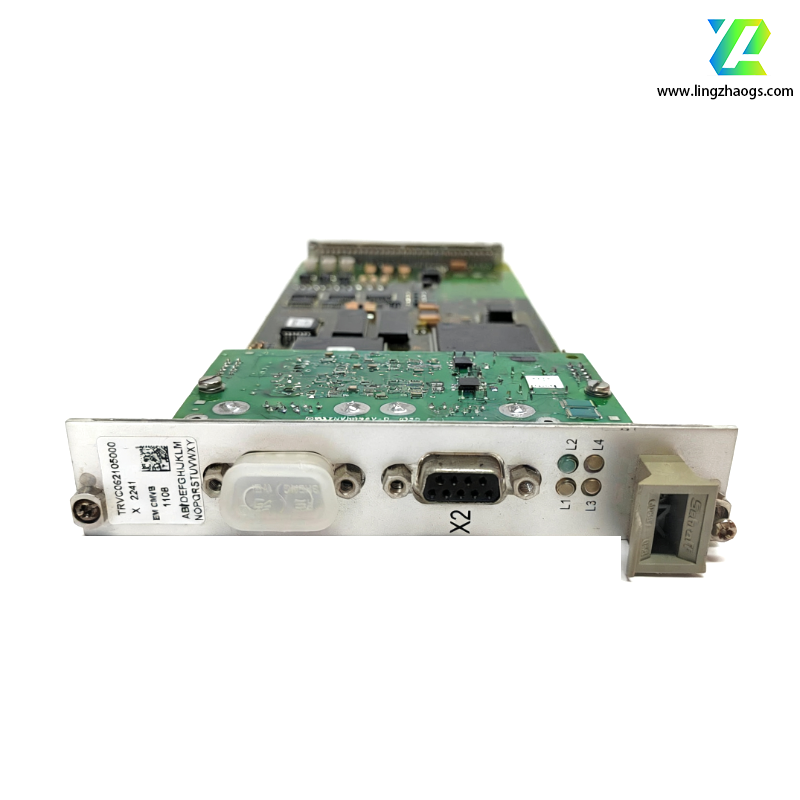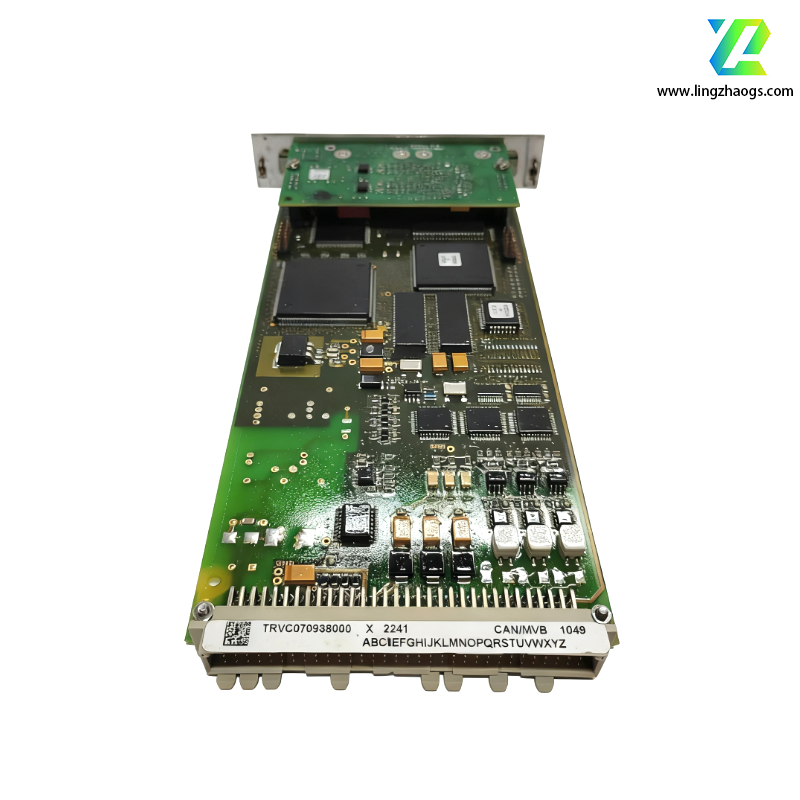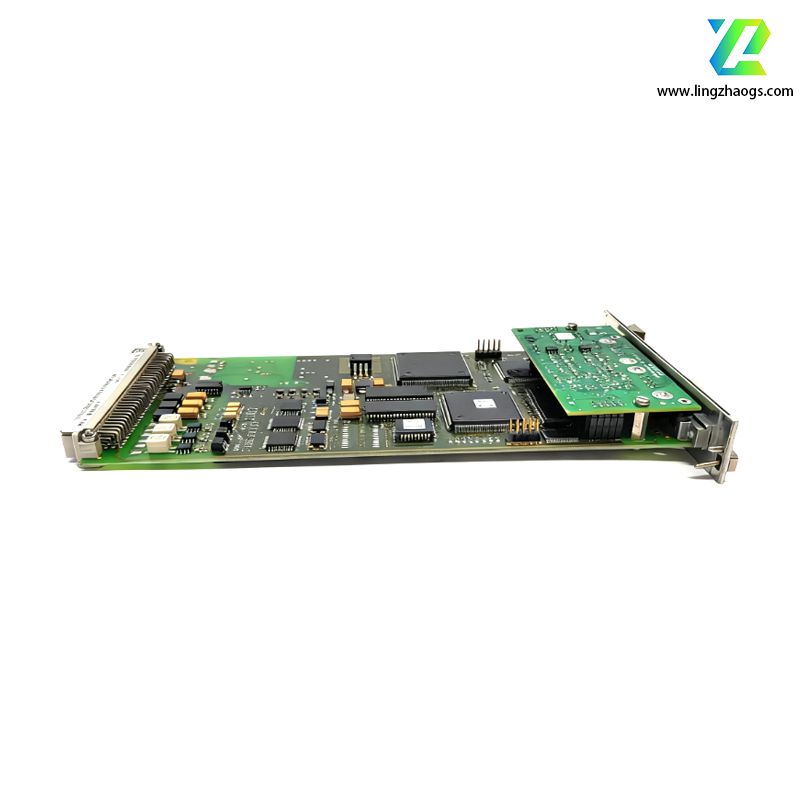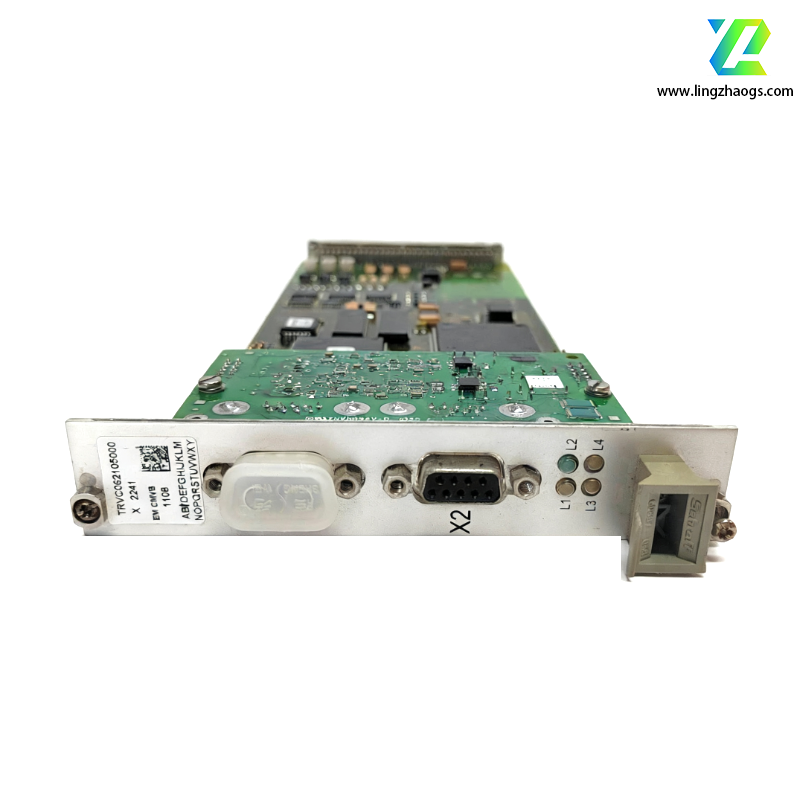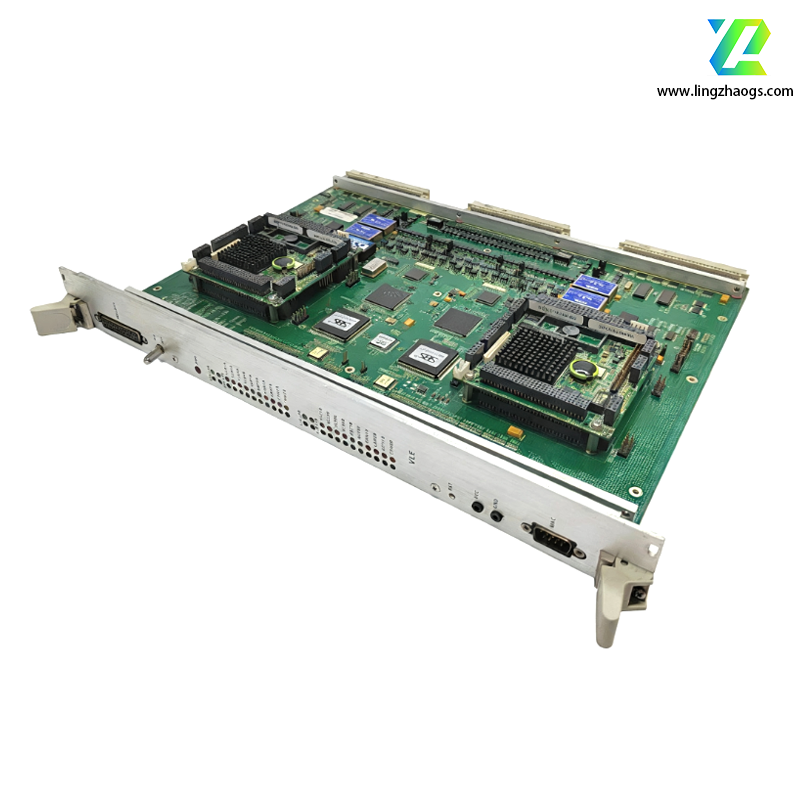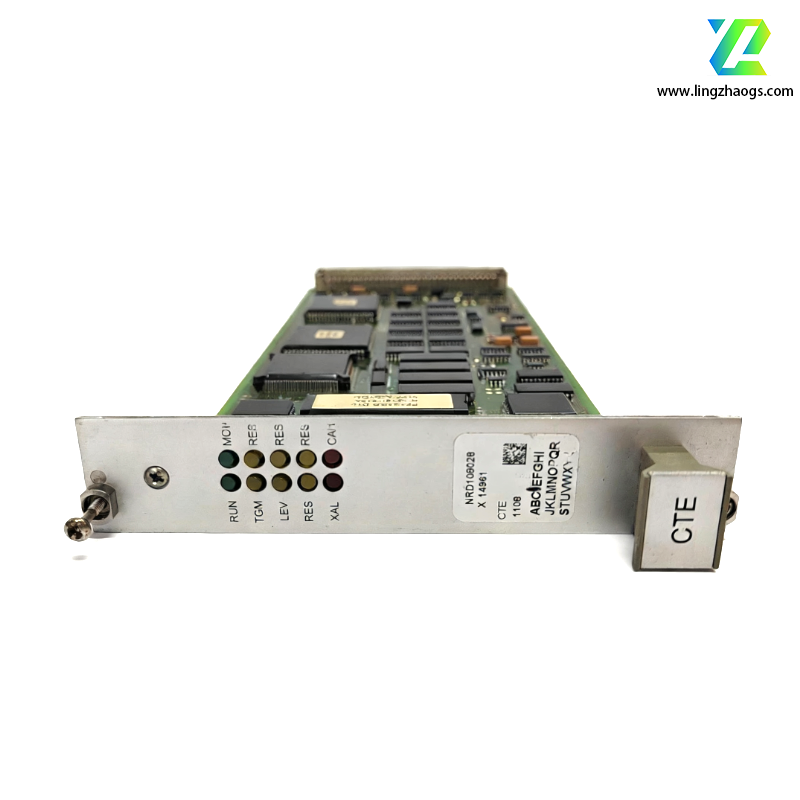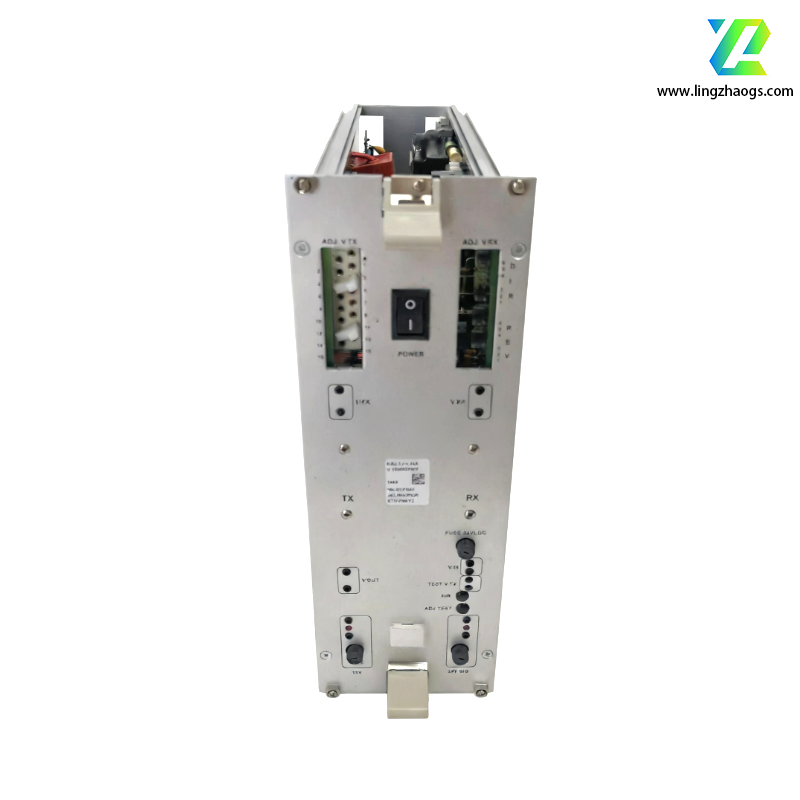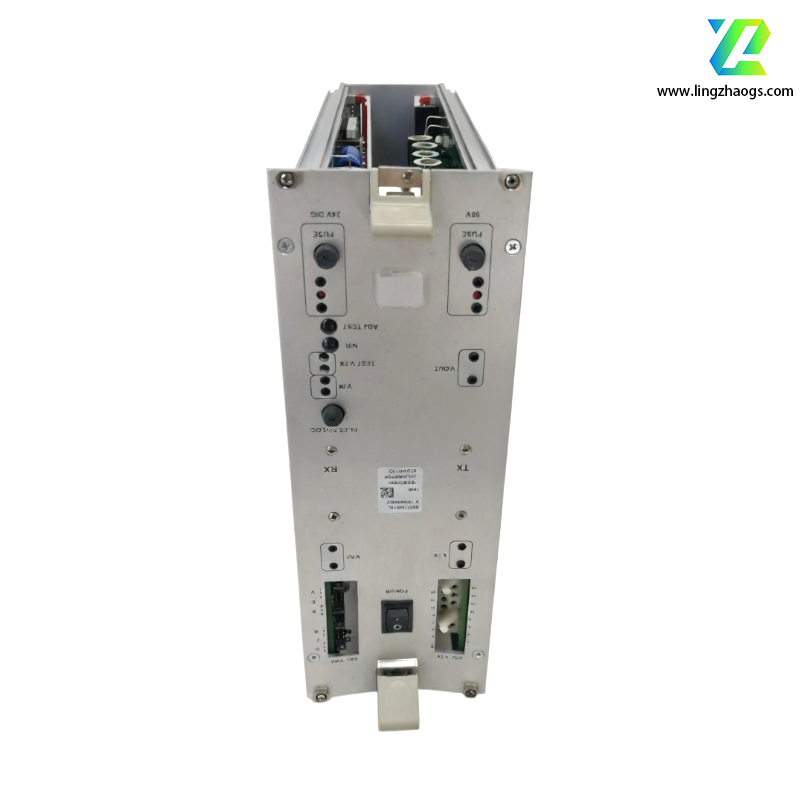ALSTOM TRVC062105000 is a railway traction system control module specifically engineered for electric and hybrid trains, integrated into ALSTOM’s traction converters and propulsion control platforms (e.g., OPTONIX™ Traction System, APS™ Ground Power Supply). As a core component in train power propulsion ecosystems, it focuses on real-time traction power regulation, regenerative braking control, and fault monitoring—designed to meet the stringent safety, efficiency, and environmental requirements of railway operations (e.g., metro, high-speed EMUs, freight locomotives). Its robust design, compatibility with traction system hardware, and compliance with railway standards ensure stable power delivery and optimal energy utilization for train propulsion.
- Traction Power Control & Regulation: Receives speed commands from the train control unit (TCU) and adjusts the output of the traction converter to regulate the voltage and current supplied to traction motors. It supports smooth acceleration/deceleration curves, with a control precision of ±1% for motor speed—critical for ensuring passenger comfort and reducing mechanical wear on train components.
- Regenerative Braking Management: Enables energy recovery during braking by converting the kinetic energy of the train into electrical energy, which is either fed back to the overhead catenary (for grid-connected trains) or stored in onboard batteries (for hybrid trains). It optimizes energy recovery efficiency (up to 75% under typical braking conditions) to reduce overall energy consumption.
- Real-Time Fault Detection & Protection: Continuously monitors key traction system parameters, including traction converter temperature, motor current, DC link voltage, and insulation resistance. It triggers protective actions (e.g., reducing traction power, activating mechanical brakes, isolating faulty components) within 50ms of detecting anomalies (e.g., overcurrent, overvoltage, insulation failure) to prevent system damage and ensure operational safety.
- Multi-Protocol Communication & Integration: Equipped with Ethernet (EtherCAT, PROFINET) and CANopen interfaces, it communicates seamlessly with the train’s TCU, traction converter, and onboard energy management system (EMS). It supports data transmission for traction status (e.g., motor speed, power output), energy recovery logs, and fault codes—facilitating remote monitoring and predictive maintenance.
- Railway Traction-Grade Ruggedness: Complies with EN 50155 (Railway Applications – Electronic Equipment Used on Rolling Stock) and EN 50124-1 (Insulation Coordination for Railway Vehicles). It operates stably in extreme temperatures (-40°C to +85°C), withstands high vibration (10–2000Hz, 8g rms) and shock (500g, 10ms half-sine wave), and resists electromagnetic interference (EMI) per EN 55032 Class B—suitable for the harsh environment of train undercarriages (where traction converters are typically installed).
- High Efficiency & Energy Savings: Optimizes traction power conversion by minimizing switching losses in the converter (via advanced PWM control algorithms) and maximizing regenerative braking energy recovery. This reduces the train’s energy consumption by 15–25% compared to conventional traction control modules, aligning with railway sustainability goals.
- Safety Compliance & Redundancy: Meets SIL 3 (Safety Integrity Level) requirements per IEC 61508 and EN 50126 (Railway Applications – Reliability, Availability, Maintainability, and Safety (RAMS)). It features a dual-core CPU with lockstep architecture for redundant control, ensuring no single point of failure compromises traction system safety.
- Compact & Easy-Integration Design: With dimensions of 220mm (W) × 180mm (H) × 60mm (D) and a lightweight aluminum alloy housing, it fits into standard traction converter cabinets (limited space under train carriages). It uses plug-in connectors for quick installation and replacement, reducing maintenance downtime by 40%.
- Urban Transit (Metro/Light Rail): Used in metro trains (e.g., ALSTOM Metropolis™) to control traction converters, enabling smooth 启停 (start/stop) and energy recovery during frequent braking (common in urban traffic). It ensures consistent speed regulation for short-distance, high-frequency trips.
- High-Speed EMUs: Integrated into high-speed trains (e.g., ALSTOM Pendolino™) to manage high-power traction systems (up to 6MW per train set). It supports rapid acceleration (0.8m/s²) and stable operation at speeds up to 250km/h, while optimizing energy use.
- Freight Locomotives: Deployed in electric freight locomotives to handle heavy-load traction (up to 10,000 tons). It adjusts traction power based on load and track gradient, and uses regenerative braking to slow down heavy trains—reducing brake pad wear.
- Hybrid Trains: Applied in hybrid rail vehicles (combining catenary power and batteries) to coordinate traction power from dual sources. It manages battery charging via regenerative braking and switches between grid and battery power based on operational needs.
In a metro system using ALSTOM Metropolis™ trains, the TRVC062105000 module is installed in the undercarriage traction converter of each train car. During peak-hour operation:
- Traction Phase: The TCU sends an acceleration command (e.g., 0.5m/s²) to the module. The module adjusts the traction converter’s output, supplying 1500V DC and 800A to the traction motors, propelling the train from 0 to 80km/h smoothly.
- Braking Phase: When approaching a station, the TCU triggers braking. The module switches the traction converter to regenerative mode, converting the train’s kinetic energy into 1500V DC electrical energy, which is fed back to the overhead catenary to power nearby trains (energy recovery efficiency ~70%).
- Fault Scenario: If a traction motor develops an overcurrent (e.g., 1200A, exceeding the 1000A limit), the module detects the anomaly within 30ms, reduces the converter output to 0, and sends a fault code to the TCU. The TCU activates the train’s mechanical backup brakes and alerts the driver via the cabin display—preventing motor burnout and ensuring passenger safety.
- Enhanced Operational Safety: SIL 3 compliance and redundant control eliminate traction system failures that could lead to train stalls or accidents, critical for passenger and freight rail operations.
- Significant Energy Savings: High regenerative braking efficiency reduces train energy consumption by 15–25%, lowering operational costs for railway operators (e.g., a 6-car metro train can save ~50,000 kWh annually).
- Reduced Maintenance Costs: Rugged design and predictive fault monitoring reduce unplanned downtime by 30%. The module’s plug-in connectors enable quick replacement (within 1 hour), minimizing service disruptions.
- Wide Compatibility: Supports multiple traction voltages (750V/1500V/3000V) and communication protocols, making it adaptable to different train types (metro, EMU, freight)—eliminating the need for custom module designs.
- Confirm Traction System Compatibility: Prior to procurement, verify the train’s traction voltage (750V DC for metro, 3000V DC for high-speed EMUs) and converter power rating to ensure the module matches the system’s requirements. Consult ALSTOM for custom configurations if needed.
- Source from Authorized Channels: Purchase through ALSTOM-authorized railway equipment distributors or original equipment manufacturers (OEMs). Request EN 50155 and SIL 3 certification documents to avoid counterfeit modules, which may fail under high-power traction conditions.
- Adhere to Installation Standards: Install by technicians trained in railway traction systems, following ALSTOM’s installation manual. Ensure proper grounding (to reduce EMI) and use high-voltage rated cables (≥2.5kV) for DC link connections. Avoid mounting near heat sources (e.g., brake discs) or water-prone areas.
- Regular Maintenance: Conduct semi-annual inspections:
- Check connector tightness (vibration can loosen high-current connections) and clean connector pins to prevent corrosion.
- Calibrate motor speed/current control accuracy using ALSTOM’s diagnostic software (e.g., ALSTOM Traction Tool Suite).
- Monitor converter temperature logs to detect early signs of component degradation (e.g., rising temperatures indicate potential cooling system issues).
- Update firmware to align with the latest traction system safety and efficiency improvements.
